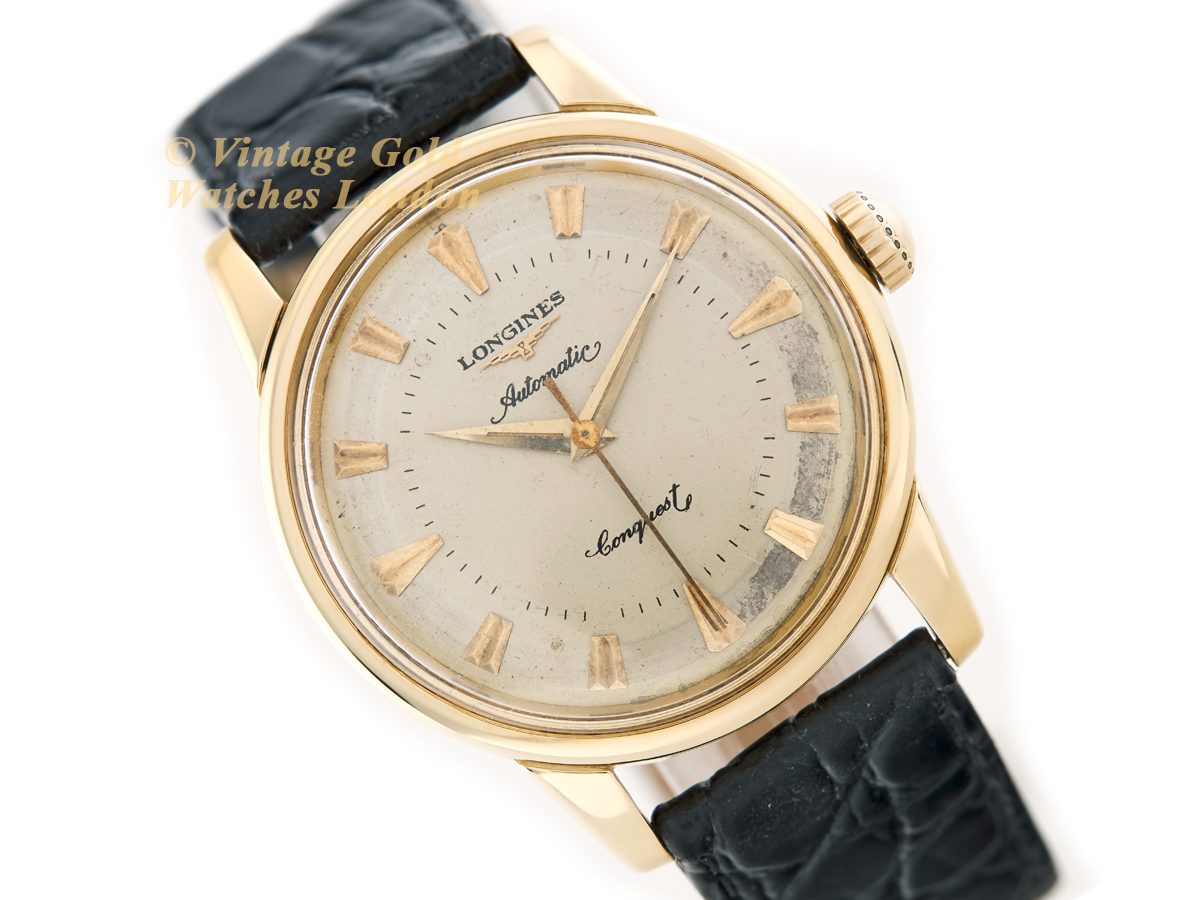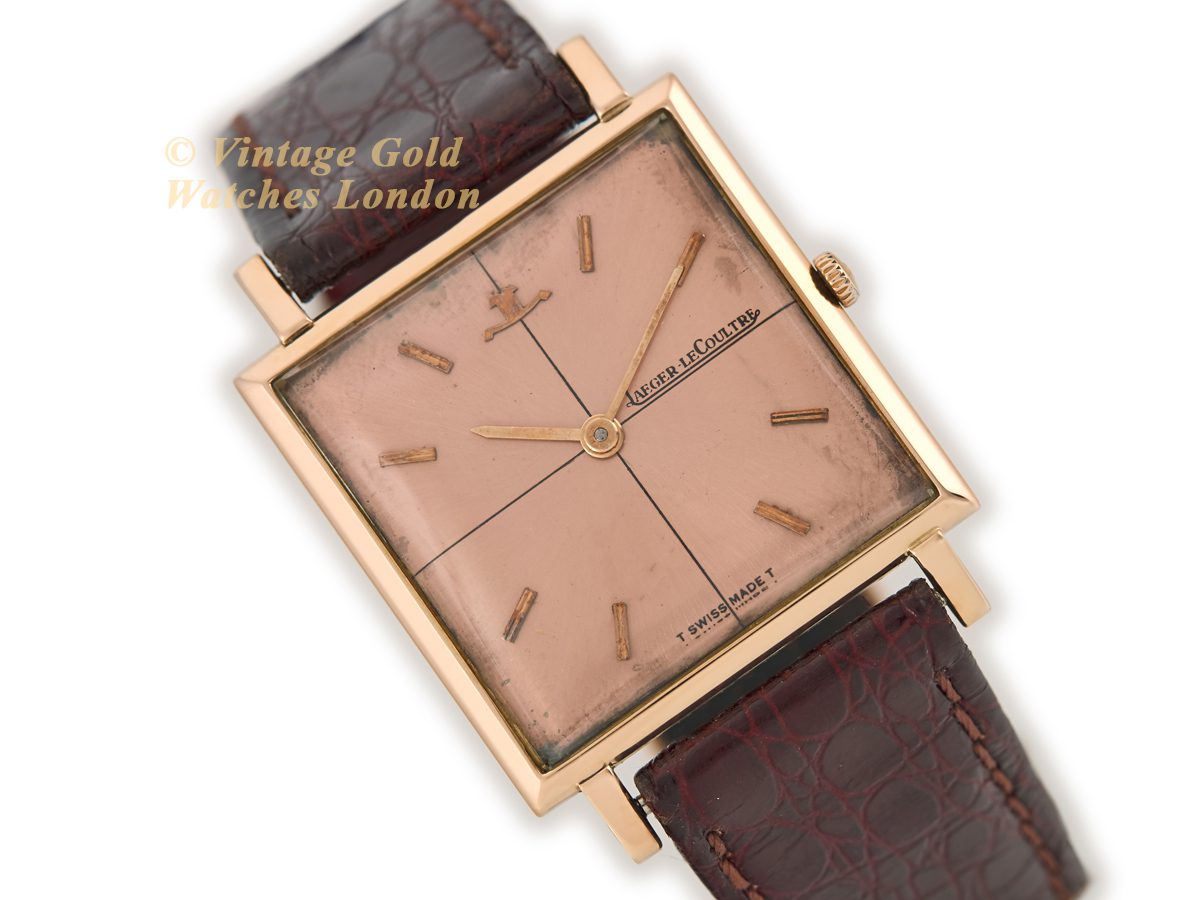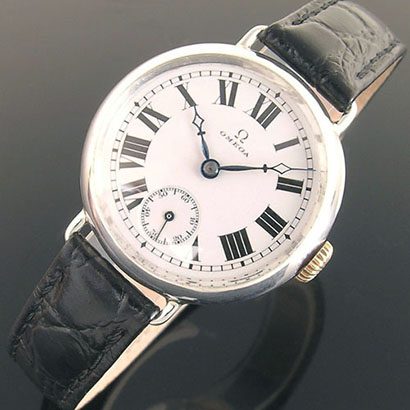OUR VINTAGE WATCH
RESTORATION PROCESS
The question of whether to restore vintage watches is subject of ongoing debate within the vintage watch community – one that we frequently encounter. While many old school watchmakers and collectors firmly believe preserving vintage watches in their original, untouched state is the only way to maintain their value, the discussion is involving.
So, why the divide? Well, much like the intricate mechanisms within these timepieces, the decision to restore or not is multifaceted and contingent upon various factors, including the specific watch and the intended type of restoration. The implications of restoration on a watch’s value are complex and nuanced, mirroring the intricate nature of vintage timepieces themselves.
Much like a 1950s Jaguar kept in superb condition, few watch experts argue that lightly used vintage watches featuring original, unrestored and untouched components should be greatly tampered with. But there are vintage watches that require far greater love and attention if they are ever to adorn another wrist.
At Vintage Gold Watches, we believe that through meticulous restoration and expert craftsmanship, we can breathe new life into these timeless pieces. Our commitment to preserving the authenticity and heritage of each watch ensures that it not only looks exquisite but also functions perfectly for many years to come.
This begs the question: What restoration options are available today, and perhaps more importantly, should you pursue them? In this guide, we’ll explore our process of vintage watch restoration and provide guidance to help you navigate this decision for your specific vintage timepiece.

To Restore or Not Restore?
One of the defining characteristics of vintage watches is the unique signs of ageing they develop over time, known as ‘patina’. From yellowed lume to scratches and discolouration, these imperfections tell the story of the watch’s journey through the years.
However, advancements in modern watch restoration technology now offer the possibility to reverse the effects of time, allowing us to restore vintage watches almost back to ‘as new’ condition or sympathetically restore them to retain some of their aged look.
The decision to partially or fully restore a vintage watch ultimately rests with its owner. While upgrading your timepiece with new features may be enticing, it’s essential to recognise that such alterations could decrease its value, depending on the extent of the modifications.
Equally important is your choice of watchmaker. Whether you opt for the original manufacturer or an independent repairer, ensure they comprehend the entire restoration process and are willing to accommodate your preferences. Don’t feel obliged to follow every recommendation blindly; always inquire about the reasoning behind each suggestion.

What Does Restoration Typically Include?
Restoring a vintage watch is a meticulous process that often demands more time and effort compared to modern timepieces, owing to their intricate designs and historical significance.
Vintage watch restorations typically include the following steps:
- Basic maintenance of the movement: This involves disassembling the watch movement, cleaning, lubricating, and adjusting the components to ensure optimal performance.
- Repair or replacement of damaged parts: Any worn or damaged components within the movement are meticulously repaired or replaced with suitable alternatives to restore functionality.
- Dial refinishing and restoration: The dial, a prominent feature of the watch, may undergo refinishing or restoration to remove signs of ageing, such as discolouration or deterioration of the markings.
- Crystal replacement or restoration: The watch crystal, which protects the dial and movement, may be replaced or restored to improve clarity and aesthetics.
- Case and bracelet refinishing: The case and bracelet undergo refinishing to remove scratches, dents, and other imperfections, restoring the watch’s appearance to its former glory.
- Water resistance testing: If a watch was originally waterproof, we can replace the seals to try and make them waterproof again. However, with a valuable 50s or 60s vintage watch, we recommend keeping it clean and dry at all times.
- Accuracy monitoring: Following restoration, the watch is meticulously monitored for 48 to 72 hours to assess its accuracy and performance, making any necessary adjustments to achieve optimal timekeeping.

Our Restoration Process
Our restoration process always involves dismantling a watch down to each of its component parts before cleaning and close examination. We then replace parts with genuine originals, rebuilding and oiling to the manufacturer’s specifications before the testing and calibration phase. Almost always, the dial and watch case will also require professional restoration.
We are happy to do as much or as little restoration work to your watch as you wish. The repairs and restoration process may involve any or all of the following:
The Movement
It is often surprising just how long a high-quality Swiss watch movement will last. In reality, with proper care and regular servicing, it is almost indefinitely. This is not only because Swiss watches are supremely well made, but there is usually a good supply of the original manufacturer’s replacement parts available. Where not available, a good watchmaker can almost always make a replacement part.
If your watch is functioning properly, it’s generally advisable to minimise cleaning to avoid unnecessary disruption. However, when cleaning becomes necessary, the servicing process involves disassembly of the entire movement, with each component cleaned individually before reassembly. During this process, our expert restorers may identify worn or damaged parts that require replacement.
Replacing internal parts will not usually affect the value of a vintage watch unless it is an iconic watch or has historical significance. The internal components of certain iconic watches add substantial value, with many vintage watches having components signed by the original maker.

Will replacement parts be original?
Where possible, our watchmakers will always use vintage watch parts from the original manufacturer. Sometimes, when parts are unavailable, the watchmaker can construct parts for the watch themselves, which is a commonly accepted practice.
The Watch Case
Surface scratches are a common occurrence with regular use and can typically be remedied without compromising the integrity of the watch case. These minor imperfections can often be buffed out without any loss of definition to the case. However, deep scratches and engravings present a greater challenge and may require the expertise of a specialist watch case-maker for restoration.
In cases where the original condition of the case is exceptionally well-preserved and has never undergone polishing, it may be advisable to simply clean the case and apply a very gentle hand polish to maintain its original appearance and quality.

Will my watch be polished?
Polishing is a normal part of the restoration process. In fact, if a watch has ever been serviced, it has likely already been polished. For instance, Rolex polishes every watch it services.
For the vast majority of vintage watch cases, gentle polishing in expert hands will increase the look and longevity of the case. It is only for those truly iconic watches, the watches so rare that they rarely see the light of day, where polishing may damage the value of the watch.
The Case-back
Unwanted engravings can often be successfully removed by a specialist wristwatch case-maker. The results can be dramatic with no loss of thickness of the case-back. However, this is highly skilled work, and an estimate can only be provided once the case-back has been inspected.
The Lugs
These attach the strap or bracelet to the watch case. Particularly on gold watches, these can become damaged, bent or even break entirely. However, with the help of a skilled watch case maker, they can be repaired.

The Dial
The hands and dials of a vintage watch are prone to discolouration or damage over time, impacting its overall appearance. While some may consider replacing them, experts unanimously advocate for trying to preserve the original components to uphold the watch’s authenticity and value.
Nevertheless, should you choose to make alterations, a skilled watchmaker possesses the expertise to employ various techniques. Scratched, pitted, stained or otherwise damaged dials can be restored or ‘refinished’ to an incredibly high standard. This is an art and craft which employs the same processes as the watch manufacturer – and the results are truly spectacular, usually undetectable from a new equivalent.
Our personal experience of collecting, restoring, and selling vintage watches for 20 years has taught us that restoring heavily damaged dials rarely decreases a watch’s value. If a watch is in truly great condition and the dial shows only slight signs of ageing, then it is best left alone.
For the other 95%, let’s say, of the watches we encounter, there’s no harm in restoring a dial because we regularly prove that watches that have been fully restored will sell just as quickly and achieve just as high prices as unrestored watches.
However, this is time-consuming and, therefore, relatively expensive. Please see our FAQ page or call us for further advice.
Vintage Watch Restoration Examples
Before

After

Before

After

Before

After

Before

After

Should I Restore My Vintage Watch?
As we have discussed, watches can undergo extensive restoration and emerge almost indistinguishable from their original state. However, it’s essential to carefully consider the motivations behind pursuing such restorations. For instance, if you view restoring a severely damaged watch as an enjoyable challenge or an act of preservation for future generations, it can be a worthwhile endeavour.
While modern restoration techniques can yield impressive results, heavy restorations may diminish a watch’s collectability and value, particularly for rare and highly sought-after timepieces. In such cases, originality and authenticity often carry greater weight among collectors and enthusiasts. Therefore, it’s advisable to exercise caution and moderation when considering restoration, especially for watches with significant historical or collectable value.
Consulting an expert watchmaker can provide valuable insight and guidance, helping you make an informed decision about whether restoration is appropriate for your timepiece. If you are unsure about whether to restore your vintage watch, feel free to contact us. We’re here to help you make an informed decision that preserves the integrity and value of your cherished timepiece.
We have built a great team of expert watchmakers, watch case restorers and watch dial restorers who are guaranteed to do exceptional work. Whether your watch needs a service, a repair or a restoration – you could not be in better hands.




